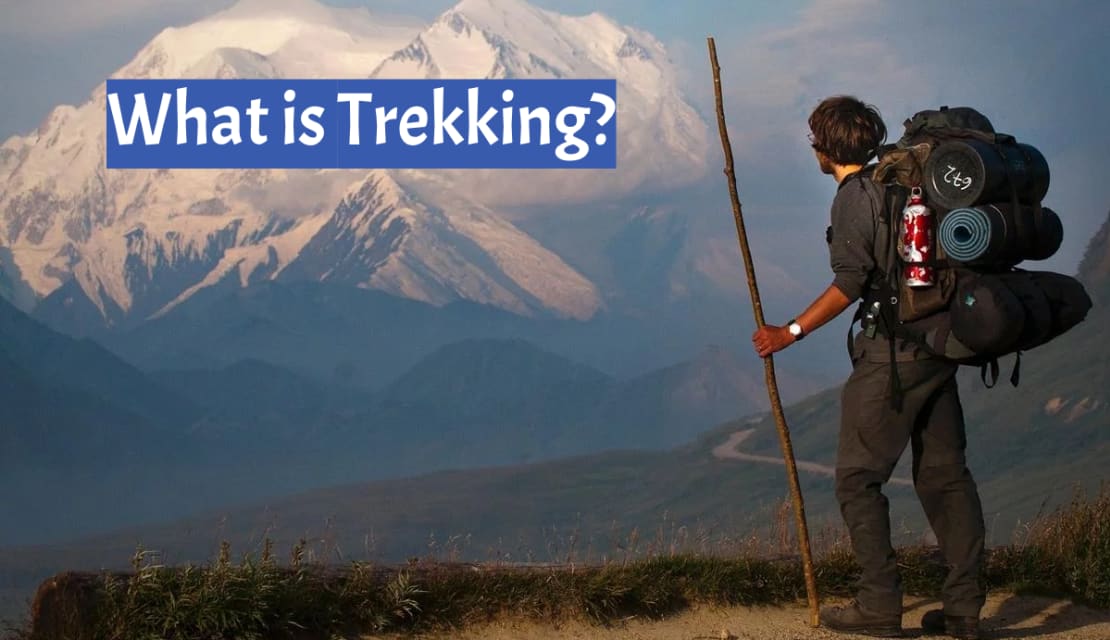Trekking is like a long walk, but mostly in places where the roads would not be there. For instance, picture yourself hiking in mountains, forests, or trails for pleasure and adventure. Individuals do it for pleasure, view scenic places and have fun, but also for a small dose of a challenge. This depends on the difficulty of the trek, whether it is a stroll or a climb. For example, people who trek always have water, snacks, and the right gear with them. Going for a walk is a great way of visiting the outdoors for exercise and finding places cars cannot easily reach.
Key characteristics of trekking include:
Duration: Trekking consists of multi day journeys and the length may be quite different. Such hikes can vary from a day or two to several weeks and cover long distances.
Challenging Terrain: Trekking takes people through difficult terrains that include mountains, dense forests, highlands, etc. There might be challenging slopes, river crossings and other difficulties along the trails.
Camping: In trekking, one needs a few days that require camping while sleeping at various places in between. While trekking, one carries camping items such as tents and sleeping bags.
Self-Sufficiency: This therefore necessitates for higher levels of trekker’s independence as compared to normal circumstances. This implies that they should have foods, equipments, and other supplies since such are easily available at reachable places.
Scenic Routes: The trekking trails are characterized by magnificent scenery, discovering pure untamed mother earth. Some of these scenes are the scenic beauty, different vegetation, unique wild-life and unusual culture.
Adventure and Exploration: Fun in adventure and discovery are among the reasons why people love trekking. Nature is their desire for interaction, a psychophysical challenge, and new territories far away.
The walk may be relatively Exhausting or it may involve climbing. There are higher levels of preparedness that are demanded in this case, which entails physical fitness, proper gear and the art of navigation, and makes the outdoor adventure very challenging and rewarding for lovers of adventures.
Type of Trekking
Trekking comes in different forms, each having its landscape, length, and grade. Here are some common types of trekking:
Day Trekking:
Day or half-day excursion.
For novices and those with limited time.
Overnight or Weekend Trekking:
Wild camping which consists of overnight stay outside that involves either camping or a more basic lodging.
In this way, they may trek a bit more and spend a night having an overnight camp.
Himalayan Trekking:
It is one of the most difficult courses positioned at the Himalayas which has beautiful and breath taking surroundings.
Touring and trekking to popular destinations including Everest Base Camp, Annapurna Circuit etc.
Jungle Trekking:
Traversing jungle and forest regions.
Provides people with a platform for wildlife viewing and appreciating the different biodiversity.
Alpine Trekking:
Involve taking long walks in mountainous regions which are mostly beyond the tree line.
Trekkers come across alpine meadows, glaciers, and rocky surfaces.
Winter Trekking:
Trekking in snow-covered landscapes.
The gear and skills needed in such conditions are highly specialized.
Cultural Trekking:
Some aspects on the tourism cultural frameworks and historiography along the trekking route.
Local traditions, customs, history, culture, heritage.
Thru-Hiking:
Trekking (hiking) long distance trails in one go.
Some of these include the Appalachian Trails, Pacific Crest Trail and the Camino de Santiago.
Peak Trekking:
Trekking up to mountain peaks is a culture.
Mountaineering skills and ability to acclimatize to high altitude environments.
Tea House Trekking:
Trekking in Nepal – goes with camping, usually at teahouses/lodges on trek-line.
A better alternative to camping.
Choose a type of hiking based on your interest, fitness level and kind of an adventure that you want.
Importance of Trekking
Trekking is essential for individuals and society because it offers various benefits including physical, physiodynamics, psychodynamic, sociodynamic, etc. Here are some key reasons why trekking is considered important:
Physical Fitness: Trekking is one of those kinds of exercises whose benefits involve the strengthening of many muscles in the body, improving cardio health and body strength improvement at large. It provides extra energy, endurance, strength and flexibility.
Mental Well-being: Some studies indicate that trekking is beneficial for mental health as it implies walking outside natural environments for a period of time. These assist in controlling stress, anxiety and depression by leaving oneself with an overwhelming sense of serenity and tranquility.
Adventure and Exploration: People can trek in their quest to experience different paths, explore new lands to encounter the thrill of life. It promotes inquisitiveness and curiosity.
Connection with Nature: An individual gets to explore nature through trekking. People admire the landscapes, habitats, and animals so they know the importance of conserving nature.
Personal Growth: Trekking also helps one to grow, some of which are traversing tough terrain and unfavorable atmospheric condition among others. It increases one’s ability to withstand pressure and improves their confidence, making them succeed in life.
Social Interaction: Trekking involves the aspect of social gathering that often encourages teamwork in participants. It is a place where hikers can meet and make new friends.
Cultural Exposure: The trekkers pass through various regions encountering diverse cultures, traditions, and ways of living. Appreciating differences among people comes with cultural exposure.
Escape from Routine: This is a way of refreshing from the mundane. People get a break from technology and can experience solitude or company while living in the simplicity of natural life.
Environmental Awareness: Appreciation of nature and its protection during trekking. Moreover, it usually promotes ecology and sustainability into people’s awareness.
Spiritual Connection: Some believe trekking is a spiritual experience. In nature it is possible to get into introspection, meditate, and connect with something bigger than ourselves without the interference of modern life’s distractions.
Adventure Tourism: Trekking tourism also contributes greatly in such areas where there are trails. It provides business opportunities to the locals and enhances sustainable tourism.




















